It’s very likely that you assumed that recording drums at home would require many microphones. I used to believe that recording drums at home would be impossible! However, that was before I learned how to record drums with 2 microphones.
The best way to start recording drums at home is by learning how to record drums with 2 microphones. Although you’ll be working with one of the simplest microphone configurations, there are still variations to recording drums at home with 2 microphones. We’ll be covering the most affordable way to record your drum kit using overhead microphones. We’ll even consider taking the same approach The Beatles used to record their drums! Regardless, you’ll be capable of recording drums using 2 microphones by using even the most affordable 2-in/2-out audio interface. Let’s get started, shall we?!
- Recording drums with 2 microphones using overhead microphones exclusively
- Recording drums with 2 microphones using X/Y (coincident) microphone placement
- Recording drums with 2 microphones using ORTF/NOS (near-coincident) microphone placement
- Recording drums with 2 microphones using the “Recorder Man” microphone configuration
- Recording drums with 2 microphones using the kick/overhead microphone combination (like The Beatles)
- Recording drums with 2 microphones using the best/most affordable overhead microphones
- Recording drums with 2 microphones using the best/most affordable kick drum/overhead microphones
- How I personally record drums with 2 microphones
Recording drums with 2 microphones using overhead microphones exclusively
One of the simplest ways to record drums using 2 microphones is by using overheads only. However, you’ll need to be quite skilled with microphone placement to avoid phasing issues.
We’ll be discussing some stereo recording techniques to better understand the situation.

Put simply, recording in stereo has its challenges when it comes to phase cancellation. The further each microphone is from one another, the more difficult it becomes. However, keep in mind that this “out of phase” sound can become desirable in some cases.
The closer each microphone is to one another though, the easier it becomes to tame phasing.
By using microphone configurations such as X/Y (coincident) and ORTF/NOS (near-coincident), we can eliminate phase cancellation while maintaining somewhat of a stereo image. However, the perception of the stereo field becomes narrower compared to a spaced pair of microphones.
We’re going to be focusing on microphones placed in close-proximity to one another because…
- It’s easier to control
- It can be done using two cardioid microphones
So, we’re going to learn how to record drums with 2 microphones using X/Y and the variations of near-coincident (ORTF/NOS) microphone placements.
We’ll even consider an interesting alternative that provides the best of both worlds!
Recording drums with 2 microphones using X/Y (coincident) microphone placement
One of the most commonly used stereo recording techniques is called X/Y. If you’re planning to learn how to record drums with 2 microphones using the X/Y configuration, you’ll need one pair of matched cardioid microphones (using unmatched microphones isn’t recommended).
Also, you may have noticed that handheld recorders (like the Zoom H4n Pro) often feature microphones placed in the X/Y configuration.
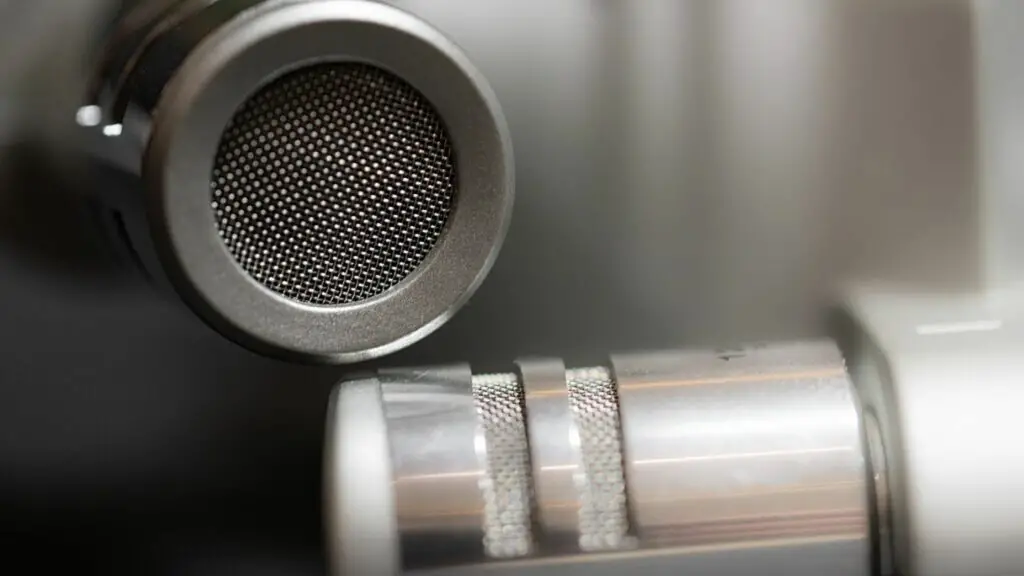
Stereo recording techniques such as X/Y provide narrow stereo spread while completely eliminating phasing issues. Since the microphones are in close proximity to one another, the sound source(s) are equally distanced from each microphone.

The configuration is pretty simple:
- Place the microphone capsules above one another (coinciding)
- Point the microphone capsules in opposite directions (criss-cross)
- Adjust the angle from 90 – 135 degrees (bigger = more stereo image)
The reason X/Y is considered coincident is because the microphone capsules are coinciding.
You’ll understand the difference after reading about near-coincident microphones…
Recording drums with 2 microphones using ORTF/NOS (near-coincident) microphone placement
ORTF/NOS microphone placements were developed by the French Broadcasting Organization and by the Dutch Broadcasting Foundation respectively. These stereo recording techniques provided significant advantages compared to the X/Y configuration.
Instead of the capsules coinciding, it’s the rear of each microphone that coincides.
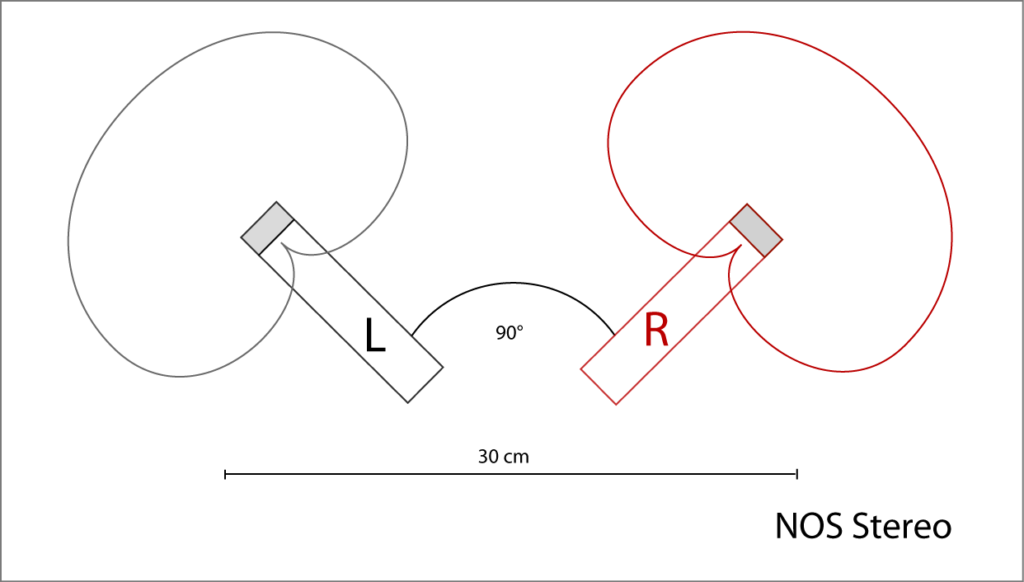
The stereo spread is slightly better since the microphones aren’t occupying the same space. The microphones are actually spaced out just enough to replicate the distance of our ears! That being said, the effect is much more pleasing to the human ear and provides maximum stereo imaging while minimizing phase cancellation.
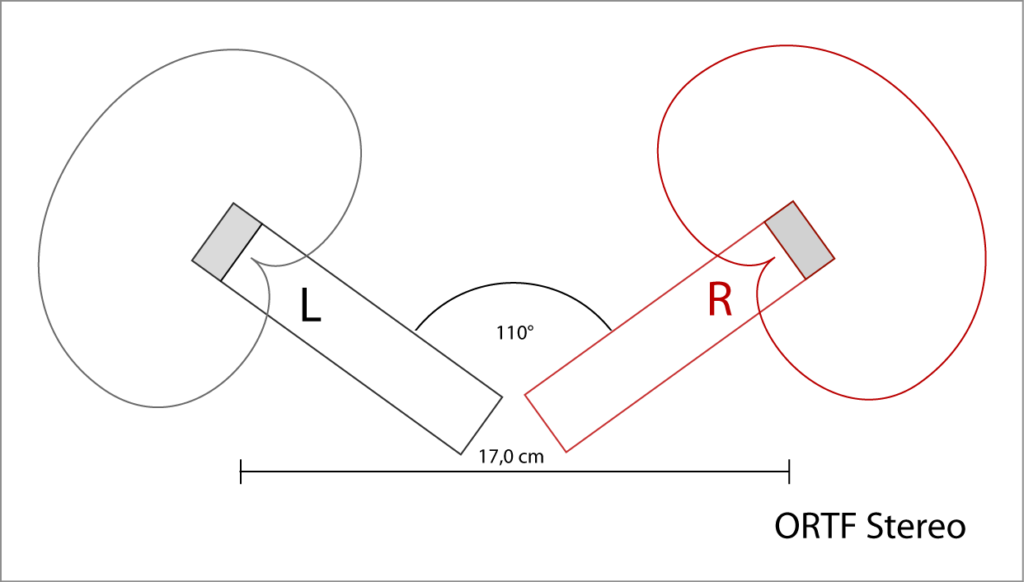
The configuration is similar for both ORTF/NOS:
- Move the microphones away from each other until the capsules are 7-inches apart (ORTF)
- Move the microphones away from each other until the capsules are 12-inches apart (NOS)
- Tilt the capsules away from one another until an angle of 110 degrees is reached (ORTF)
- Tilt the capsules away from one another until an angle of 90 degrees is reached (NOS)
Both standards are using the same technique with different measurements.
While still remaining in the “coincident/near-coincident” realm, ORTF/NOS provide the maximum stereo spread with minimal phasing (just like the human ear)!
Recording drums with 2 microphones using the “Recorder Man” microphone configuration
An interesting alternative that has surfaced in recent years is the “Recorder Man” microphone configuration. If you’re planning to learn how to record drums with this stereo recording technique, you’ll definitely need a measuring tape!
I know I said we’d be focusing on microphone placement involving close-proximity, but I REALLY wanted to talk about “Recorder Man”.
However, the “Recorder Man” configuration actually provides us with the perfect segway into our final approach! It’s actually difficult to categorize it because we’re technically using the microphones like overheads, but not really…
The configurations is slightly more complicated than the others:
- Place the first microphone 40 inches directly over the kit (pointing towards the kit)
- Place the second microphone 40 inches over the drummer’s right shoulder
- The second microphone should be pointing at the snare or kick drum beater
In other words, the microphones are equally spaced from one another and if done correctly, you’ll never need to worry about phasing issues!
It’s possible to use the “Recorder Man” method with matched/unmatched microphones (for example, dynamic + condenser).
Recording drums with 2 microphones using the kick/overhead microphone combination (like The Beatles)
The other approach you could use to record drums with 2 microphones is by using one kick drum microphone and one overhead microphone. The main difference is that you’ll get more focus in the low-end, but you’ll potentially lose your stereo image (or not, find out how).
The Beatles recorded most of their drums using similar microphone placement.
The reason you’d lose your stereo image is that both microphones would be panned center. The kick drum microphone is always panned center and your single overhead NEEDS to be panned center to avoid an unbalanced sound.
Here’s how you’d go about setting this up:
- Place your kick drum microphone in right front of (or inside) the kick drum
- Place your overhead microphone approximately 5-feet above the kit
Ideally, you’ll be using a microphone designed for kick drums (check out my recommendation) and the overhead I leave up to you (although I’ll be recommending something interesting)!
Similarly, you can use the same microphone placement with an additional overhead.
Recording drums with 2 microphones using the best/most affordable overhead microphones
If you’ve decided to learn how to record drums with 2 microphones using overheads only, I think you’ll be happy with the Samson C02 (pair). As small-diaphragm condenser microphones, you’ll get maximum transient response from your drums without needing to worry about SPL.
The Samson C02 stereo pair can handle up to 134 dB of SLP!
The reason I chose these microphones is because of their exceptional quality and surprising affordability. I don’t think we need to break the bank to record professional sounding drums. I also like the fact that Samson included the essential accessories.
Here’s what comes in the box:
- 2x Samson C02
- Protective carrying case
- 2x shockmount clips
- 2x foam windscreen
Regardless of where your preferences lie, I think the Samson C02s are a must-have.
If you’re interested in finding out more, you can read my product review here.
Recording drums with 2 microphones using the best/most affordable kick drums/overhead microphones
Although you could technically use one of the Samson C02s as your overhead, we’ll be pretending that we’re starting from scratch. If you’re planning to record drums with 2 microphones using the kick drum/overhead configurations, you’ll need versatility.
The kick drum is easy, just go with the Sennheiser e 602-II and you’ll be set (read my review).
However, I wanted to provide you with an interesting alternative with the overhead. We may be working in mono, but that doesn’t mean we can’t make something remarkable with one microphone. We’ll be looking at the Audio Technica AT2050 multi-pattern microphone.
If you’ve never heard of multi-pattern microphones, they can be…
- Omni-directional
- Uni-directional
- Bi-directional
That’s right, all of this in ONE microphone!
It’s a little bit more of a splurge, but you can create some interesting effects, especially using the omni-directional polar pattern. You can read my product review here!
How I personally record drums with 2 microphones
I’m certain that you weren’t expecting so many different possibilities out of 2 microphones! We haven’t even covered some of the more advanced techniques, but that’s because I wanted to get you started right away.
Either way, the stereo recording techniques we discussed are the ones most commonly used.
To be completely honest, I’m still deciding for myself which of these microphone configurations I should use. Perhaps they’ve all got their place in different situations, but for the moment I can’t really settle on anything as my “main” method.
I really like the “Recorder Man” configuration though and I’ve used ORTF as well.
It’s always different because you can experiment with the precise location of your microphones. Maybe one day you put them a little higher and maybe the next you angle them slightly differently.
The best way to start picking favourites is by taking notes (like a journal).
Other than that, I’ve created your “shopping list” for this project. It includes some of the gear I personally use and some that I plan to use in the near future.
I hope you consider checking some of these out, but I encourage you to do your own research:
Samson C02 Stereo Pair Condenser Microphone:
Sennheiser e 602-II Dynamic Kick Drum Microphone:
Audio Technica AT2050 Multi-Pattern Condenser Microphone:
K&M Microphone Stand:
Pig Hog PHM10 (XLR Cable):
If you’ve been meaning to learn how to record drums with 2 microphones, I hope you’ve found everything you were looking for. I also hope that you use this article to both inspire and motivate you to start recording drums at home. It’s not as difficult as it seems and I can almost guarantee professional results if you use the right microphones and proper microphone placement. If you want to learn more about recording drums at home, please subscribe to my weekly newsletter for more content just like this. I appreciate your time, now go out there and prove to everyone that it CAN be done!
Sources:
https://pro.harman.com/insights/entertainment/the-minimalist-part-3-miking-drums-with-only-two-mics/
http://jonstinson.com/the-recorder-man-drum-miking-technique/
https://theproaudiofiles.com/4-stereo-miking-techniques/
https://www.musictech.net/tutorials/recreate-abbey-road-drum-sound/
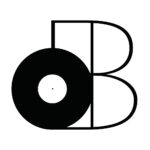

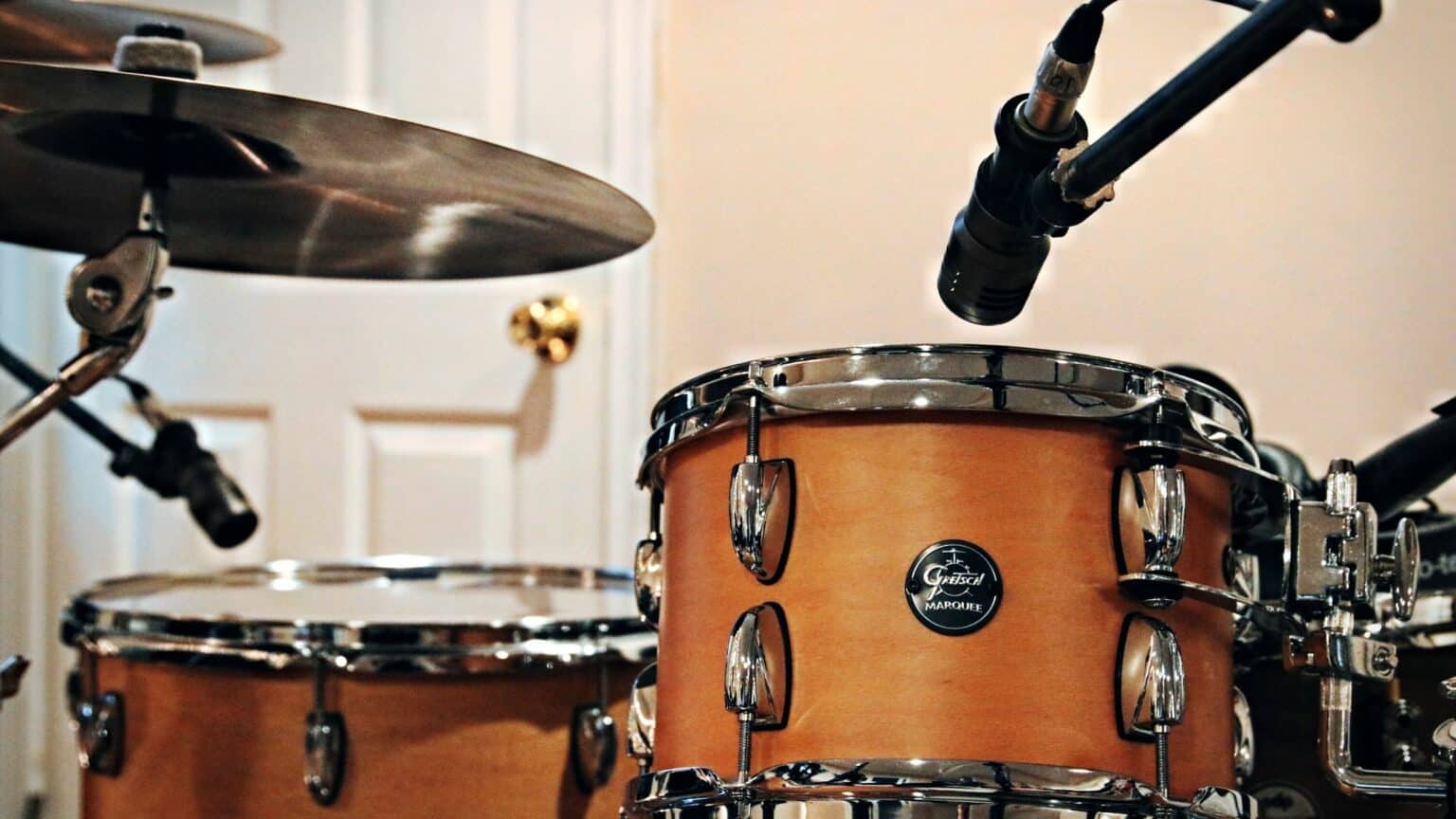

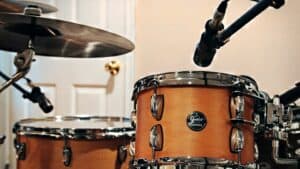
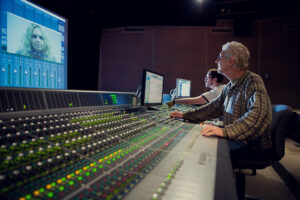

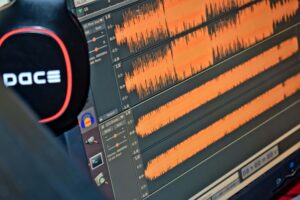


2 thoughts on “How To Record Drums With 2 Microphones”
I’m in the marching band at my university and play the saxophone. However, it’s necessary for everyone to help each other to set up and take down as we rehearse and perform so that we’re as efficient as possible. Of course, right now the band is on hold, and we must all practice individually. For most of us, it’s easy. We just bring our instrument home and play somewhere else, no problem. We don’t need the fancy set ups that percussion does. Our drummer would love to hear these tips as he transitions to an at home setting. I’ll send him this article right away.
Hey Maria!
I’m glad to hear most of your group has made the transition successfully. It is slightly more difficult for drummers, but as you can see, it only takes two microphones and they’re pretty affordable too!
I’m sure your drummer will be relieved to hear that!
I appreciate your thoughtful comment, take care.
– Stefan